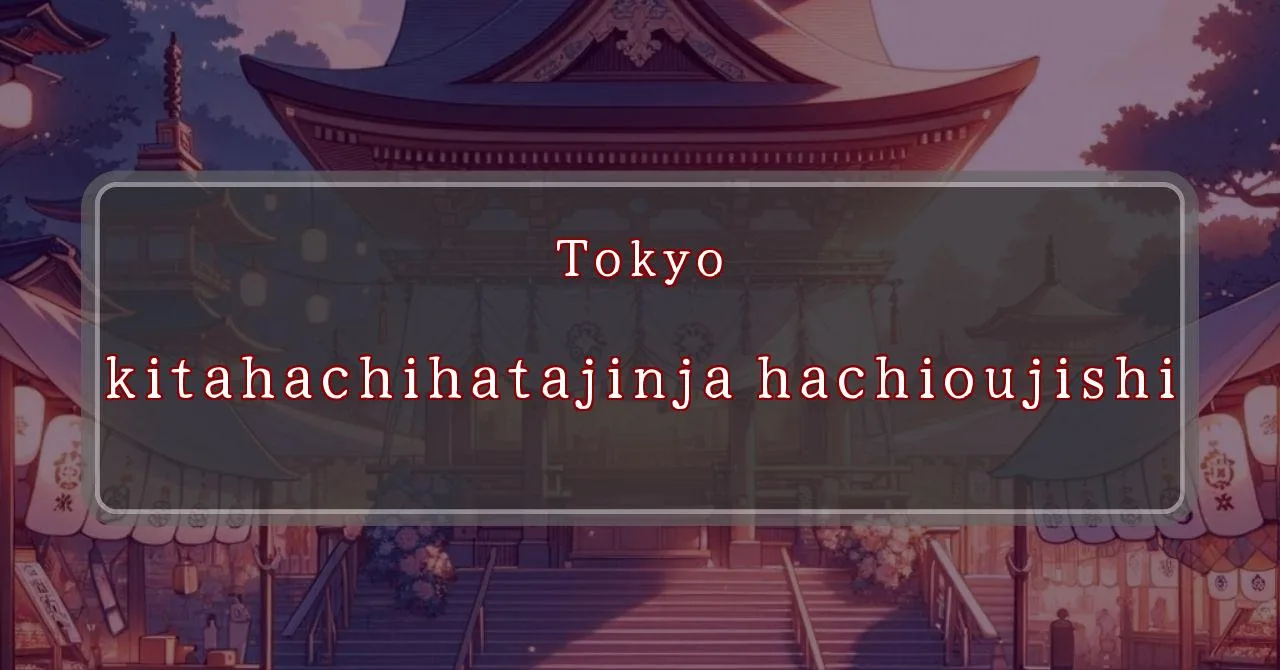Gleaming lanterns illuminate the night at Hachimangu Shrine
Basic Information
Here’s a detailed overview of the 2024 Kita Hachimangu Shrine Hachioji City Festival.
- Address: 2039 Horinouchi, Hachioji City, Tokyo
- Phone Number: None
- Access: A 10-minute walk from Keio Horinouchi Station
- Festival Days: August 30th (Friday), 2024
Main Events and Attractions of the Festival
The Kita Hachimangu Shrine Hachioji City Festival is a vibrant and lively event that attracts many visitors each year. Here are some of the main events and attractions of the festival:
Mikoshi Procession
One of the highlights of the festival is the mikoshi procession. A mikoshi is a portable shrine that is carried through the streets by a group of people. The mikoshi of Kita Hachimangu Shrine is particularly large and impressive, and it is carried by a team of over 100 people. The procession is a lively and colorful event, and it is a great opportunity to experience the traditional culture of Japan.
Shishimai Dance
Another popular attraction at the festival is the shishimai dance. The shishimai is a lion-like creature that is said to bring good luck and fortune. The dance is performed by two people, one inside the shishimai costume and one playing the drums. The shishimai dances through the streets, blessing people and businesses with good luck.
Kagura Performance
Kagura is a traditional Japanese performing art that combines music, dance, and storytelling. Kagura performances are often held at Shinto shrines and festivals, and they are a great way to learn about Japanese mythology and culture. The kagura performance at the Kita Hachimangu Shrine Festival is a highlight of the event, and it is sure to entertain and inform visitors of all ages.
Blessings and Deities
Kita Hachimangu Shrine is dedicated to the deity Hachiman, the god of war and agriculture. Hachiman is one of the most popular deities in Japan, and he is revered by people from all walks of life. He is often depicted as a warrior in full armor, riding a white horse. Hachiman is also known as the protector of the imperial family, and he is often invoked in times of war or national crisis.
- Deity: Hachiman
- Description: God of war and agriculture
- Symbolism: Warrior in full armor, riding a white horse
- Significance: Protector of the imperial family, invoked in times of war or national crisis
Origin and History
The origins of Kita Hachimangu Shrine are unclear, but it is believed to have been founded in the 16th century. The shrine was originally located in a different part of Hachioji City, but it was moved to its current location in the 17th century. Kita Hachimangu Shrine has been a popular place of worship for centuries, and it is visited by people from all over Japan.
- Founded: 16th century
- Original Location: Different part of Hachioji City
- Current Location: 2039 Horinouchi, Hachioji City, Tokyo
- Significance: Popular place of worship for centuries, visited by people from all over Japan
Tips and Notes for Visitors
If you are planning to visit Kita Hachimangu Shrine, here are a few tips and notes to keep in mind:
- Hours: The shrine is open from 9:00 AM to 5:00 PM every day.
- Admission: Admission to the shrine is free.
- Dress Code: There is no specific dress code for visiting the shrine, but it is considered respectful to dress modestly.
- Photography: Photography is allowed inside the shrine, but please be respectful of other visitors and avoid taking pictures of people without their permission.
- Parking: There is a small parking lot available for visitors to the shrine.
Parking Information
There is a small parking lot available for visitors to Kita Hachimangu Shrine. The parking lot is located next to the shrine, and it can accommodate up to 10 cars. Parking is free of charge.
- Location: Next to the shrine
- Capacity: 10 cars
- Cost: Free of charge
Popular Stalls and Food Carts in Recent Years
| Type of Stall | Description |
|---|---|
| Takoyaki | A staple at Japanese festivals. Characterized by a crispy outside and a creamy inside. |
| Jaga Butter | A simple yet popular snack of hot potatoes lavishly topped with melted butter. |
| Baby Castella | Small castella cakes, sweet and fluffy treats enjoyed by children and adults alike. |
| Grilled Ayu with Salt | Fresh ayu fish grilled whole with salt, a savory taste of Japanese summer. |
| Shaapin | A unique gourmet item influenced by foreign cuisine, with a chewy skin wrapping the filling. |
| Okonomiyaki | A Japanese grilled dish where you often choose your own ingredients for a personalized flavor. |
| Cotton Candy | A fluffy, sweet snack that’s extremely popular with children. |
| Chocolate Banana | A banana coated in chocolate, a fun and visually appealing dessert. |
| Kushiyaki | Various types of ingredients skewered and grilled, an easy-to-enjoy snack. |
| Yakisoba | Fried noodles mixed with a special sauce, a fast food favorite in Japan. |



